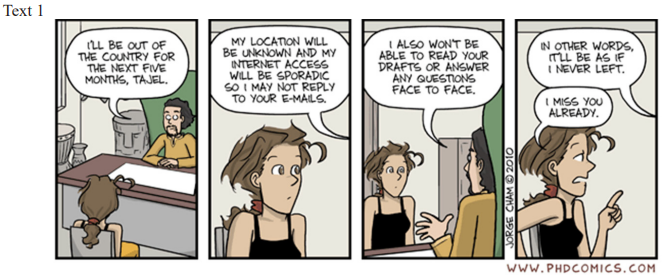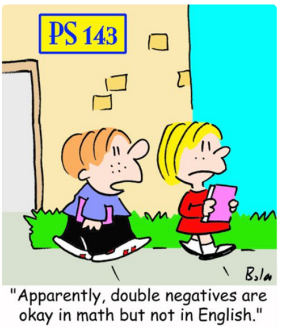Questões de Concurso
Filtrar
3.910 Questões de concurso encontradas
Página 78 de 782
Questões por página:
Questões por página:
KUMARAVADIVELU, B. (1994, p.28-29) points out three important categories of language teaching method: language-centered, learnercentered and learning-centered. Although, from the practitioner’s point of view, none of these methods can be realized in their purest form in the actual classroom, the sample below can be classified as follow:
Introductory classroom Young EFL learners in an English language school. Teacher starts the class asking a strong learner, ‘Enzo, how are you?’ The learner responds, ‘Fine, how are you?’. The teacher continues, asking different learners, who respond in turn: Teacher: Sophia, how are you? Student: Fine, how are you? Teacher: Francisco, how are you? Student: Fine, how are you? Teacher: Valentina, how are you? Student: Fine, how are you? If a learner struggles to produce the response, the teacher demonstrates the correct utterance by first mouthing the syllables and then saying them aloud if necessary. The teacher corrects pronunciation, particularly emphasizing the /h/ sound in ‘how’ by breathing on her/his hand as if using a mirror, and drills the prompts with the students. The activity continues until every learner has been asked and has provided the correct response.
Introductory classroom Young EFL learners in an English language school. Teacher starts the class asking a strong learner, ‘Enzo, how are you?’ The learner responds, ‘Fine, how are you?’. The teacher continues, asking different learners, who respond in turn: Teacher: Sophia, how are you? Student: Fine, how are you? Teacher: Francisco, how are you? Student: Fine, how are you? Teacher: Valentina, how are you? Student: Fine, how are you? If a learner struggles to produce the response, the teacher demonstrates the correct utterance by first mouthing the syllables and then saying them aloud if necessary. The teacher corrects pronunciation, particularly emphasizing the /h/ sound in ‘how’ by breathing on her/his hand as if using a mirror, and drills the prompts with the students. The activity continues until every learner has been asked and has provided the correct response.
“Em termos práticos, a acepção convencional de conhecimento e sujeito, fundamentada na lógica da concentração, do individualismo e da normatização, remonta ao modelo liberal-positivista de educação que “transmite” uma verdade universal e acabada a um sujeito que a recebe de maneira diretiva e que a devolve a contento de modelos previamente determinados pela instituição escolar. Ao passo que a acepção pós-moderna de conhecimento e de sujeito tenta romper com a ideia de transmissão ao compreender o conhecimento como construção sociocultural. Nessa perspectiva, a produção de sentidos passa a ser compreendida sob o viés da colaboração, cujas significações devem ser mediadas pela escola.” (Duboc,2015, p.668)
In Avaliação da aprendizagem de línguas e os multiletramentos, Duboc (2015) states that the emergence of new literacies in the post-typographical society is closely related to a new understanding of subject, language and meaning making processes. Regarding knowledge construction in both moments discussed by the author, it is correct to say that:
In Avaliação da aprendizagem de línguas e os multiletramentos, Duboc (2015) states that the emergence of new literacies in the post-typographical society is closely related to a new understanding of subject, language and meaning making processes. Regarding knowledge construction in both moments discussed by the author, it is correct to say that:

Fonte: Disponível em: https://phdcomics.com/comics.php?f=1374.Acesso em: 30 ago.2024.

Fonte: Disponível em: https://worldofmirth.com/products/ ugh-as-if-clueless-vinyl-sticker. Acesso em: 30 ago.2024.
How does the semantic use of ‘as if’ in the final panel of the comic strip in Text 1 contrast with its application in Text 2?

Fonte: Disponível em: https://www.cartoonstock.com/ cartoon?searchID=CS249584. Acesso em: 2 ago.2024.
The comic cartoons, frequently, highlight an interesting linguistic construction often censured by grammarians: the use of double negatives to articulate a single negation. The critique of double negatives is based on the notion that negation is an absolute concept; something is either present or absent, and adding a second negative into a sentence does not make it more negative than it was before. However, Swan (2005, p.364) reminds us that “multiple negatives are sometimes used instead of simple positive structures for special stylistic effects. This is rather literary; in spoken English, it can seem unnatural or old-fashioned”. In which of the alternatives bellow there is a purposeful use of a double negative structure for stylistic gains?
Read the following text to answer the question bellow:
The use of the word ‘America’ in the singular and without an adjective may shock the reader. In the expressions ‘God bless America’ or ‘Make America great again’, the part is taken for the whole. In Latin America, people speak more accurately of the Americas - Las Americas. ‘America’ was the baptismal name given in I507 by the German cartographer Martin Waldseemüller in Saint-Diédes-Vosges, based on the voyage of the Italian Amerigo Vespucci to only the southern half of the Western hemisphere. The symbolic cornering of its two continents by English-speaking and Protestant America, ignoring the Romance languages and Catholic traditions in the rest of the New World, has since expressed the relationship of forces between them. In what follows, the word designates less a state and a territory than a certain form of civilization.
DEBRAY, Regis. Civilization. How we all became American. Verso: London,2019.
According to the text, what does the use of the term ‘America’ without an adjective signify in the context of English-speaking and Protestant America?
The use of the word ‘America’ in the singular and without an adjective may shock the reader. In the expressions ‘God bless America’ or ‘Make America great again’, the part is taken for the whole. In Latin America, people speak more accurately of the Americas - Las Americas. ‘America’ was the baptismal name given in I507 by the German cartographer Martin Waldseemüller in Saint-Diédes-Vosges, based on the voyage of the Italian Amerigo Vespucci to only the southern half of the Western hemisphere. The symbolic cornering of its two continents by English-speaking and Protestant America, ignoring the Romance languages and Catholic traditions in the rest of the New World, has since expressed the relationship of forces between them. In what follows, the word designates less a state and a territory than a certain form of civilization.
DEBRAY, Regis. Civilization. How we all became American. Verso: London,2019.
According to the text, what does the use of the term ‘America’ without an adjective signify in the context of English-speaking and Protestant America?